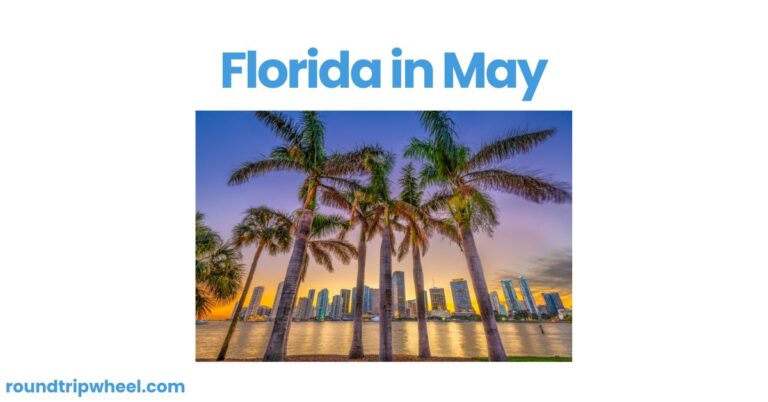The Best & The Worst Time to Visit North Carolina

North Carolina is a state that truly offers something for everyone, from the majestic Blue Ridge Mountains in the west to the serene beaches of the Outer Banks along the Atlantic coast. With such diverse landscapes and attractions, the ideal time to visit can vary depending on your interests and preferences. In this article, we’ll explore the best and worst times to plan your North Carolina adventure, taking into account factors like weather, crowds, costs, and seasonal events.
The Best Times to Visit North Carolina
Spring (March-May)
Spring is an enchanting time to experience North Carolina’s natural beauty. As the state emerges from the winter chill, the mountains and valleys come alive with vibrant wildflowers and budding trees. The weather during this season is generally mild, with average highs ranging from the mid-60s to the low 80s, making it ideal for outdoor activities like hiking, cycling, and exploring the state’s stunning parks and gardens.
One of the highlights of spring in North Carolina is the blooming of the dogwood trees, which paint the landscape with their distinctive white and pink blossoms. This season is also perfect for visiting the charming towns and cities, such as Asheville, Chapel Hill, and Wilmington, where you can enjoy local festivals, farmers’ markets, and outdoor patios without the sweltering heat of summer.
Fall (September-November)
Autumn is arguably the most popular time to visit North Carolina, and for good reason. As the leaves change color, the Blue Ridge Parkway and the Great Smoky Mountains National Park transform into a breathtaking tapestry of reds, oranges, and golds. This is the prime season for leaf-peeping, scenic drives, and outdoor adventures in the mountains.
The fall weather in North Carolina is typically pleasant, with average highs in the 60s and 70s, making it comfortable for hiking, camping, and enjoying the great outdoors. Additionally, many of the state’s popular attractions, such as the Biltmore Estate in Asheville and the historic towns of the Piedmont region, offer seasonal events and festivals that celebrate the harvest and the changing seasons.
The Worst Times to Visit North Carolina
Summer (June-August)
While summer is a popular time for beach vacations and outdoor activities, it can be a challenging season to visit North Carolina, especially for those who struggle with heat and humidity. The state experiences hot and sticky conditions during these months, with average highs ranging from the mid-80s to the mid-90s, and occasional heat waves that can push temperatures even higher.
Additionally, summer is the peak tourist season in North Carolina, which means that popular destinations like the Outer Banks, Asheville, and the coastal towns can be crowded and more expensive. Accommodation rates tend to be higher, and attractions may have longer wait times or even capacity limits.
Winter (December-February)
Winter in North Carolina can be a mixed bag, with temperatures ranging from mild to downright chilly, depending on the region. The western mountains often experience snowfall and freezing temperatures, making some outdoor activities challenging or even impossible. However, the coastal areas and Piedmont region tend to be milder, with average highs in the 50s and occasional warm spells.
While the winter season can be a quieter time to visit, with fewer crowds and lower accommodation rates, it’s important to note that some attractions and businesses may have reduced hours or be closed altogether. Additionally, the weather can be unpredictable, with the risk of winter storms or freezing rain, which can disrupt travel plans.
Factors to Consider When Planning Your North Carolina Visit
Weather
North Carolina’s weather can be unpredictable and varied, with distinct seasons and microclimates across different regions. It’s essential to consider the weather conditions during your preferred travel dates to ensure a comfortable and enjoyable experience. If you’re sensitive to heat and humidity, it’s best to avoid the summer months, especially in the coastal areas and Piedmont region. If you’re looking for cooler temperatures and stunning fall foliage, the autumn season is an ideal choice for visiting the mountains.
Crowds and Costs
Peak tourist seasons, such as summer and fall, can bring larger crowds and higher prices for accommodations, attractions, and activities. If you prefer a quieter and more budget-friendly experience, consider visiting during the shoulder seasons (spring and early fall) or the off-season (winter). However, keep in mind that some attractions and businesses may have reduced hours or be closed during the quieter months.
Events and Festivals
North Carolina is home to numerous annual events and festivals, many of which are tied to specific seasons or holidays. If you’re interested in attending a particular event, such as the North Carolina Azalea Festival in Wilmington (April), the High Country Beer Fest in Boone (August), or the North Carolina State Fair in Raleigh (October), plan your visit accordingly to ensure you don’t miss out.
Regional Attractions and Activities
Different regions of North Carolina offer unique attractions and activities that may be more enjoyable during certain seasons. For example, the coastal areas are perfect for beach vacations and water sports in the summer, while the mountains are ideal for hiking, leaf-peeping, and winter sports like skiing and snowboarding during the cooler months. Consider your interests and desired activities when choosing the best time to visit.
Conclusion
North Carolina is a state that truly offers something for every traveler, no matter the season. While the spring and fall are generally considered the best times to visit, with mild weather and stunning natural beauty, each season has its own unique charms and opportunities for exploration.
Whether you’re seeking a peaceful retreat in the mountains, a lively beach vacation, or a cultural immersion in the state’s vibrant cities, North Carolina has something to offer throughout the year. By considering factors like weather, crowds, costs, and seasonal events, you can plan the perfect trip that aligns with your interests and preferences.
So, pack your bags, grab your sense of adventure, and get ready to discover the diverse landscapes, rich history, and warm hospitality that make North Carolina a truly remarkable destination. Happy travels!

About Author
Hey there, fellow explorers! I’m Mark Rodriguez, a big fan of adventures and always hungry for more. Packed with stories and a trusty camera, I’m on a mission to explore cool places around the world.
I love diving into new cultures and landscapes. As a travel writer, my goal is to get you excited about stepping out of your comfort zone, trying new things, and discovering the awesome magic our world has.
Check out my blog for cool stories, travel ideas, and helpful tips to plan your own amazing getaway!





